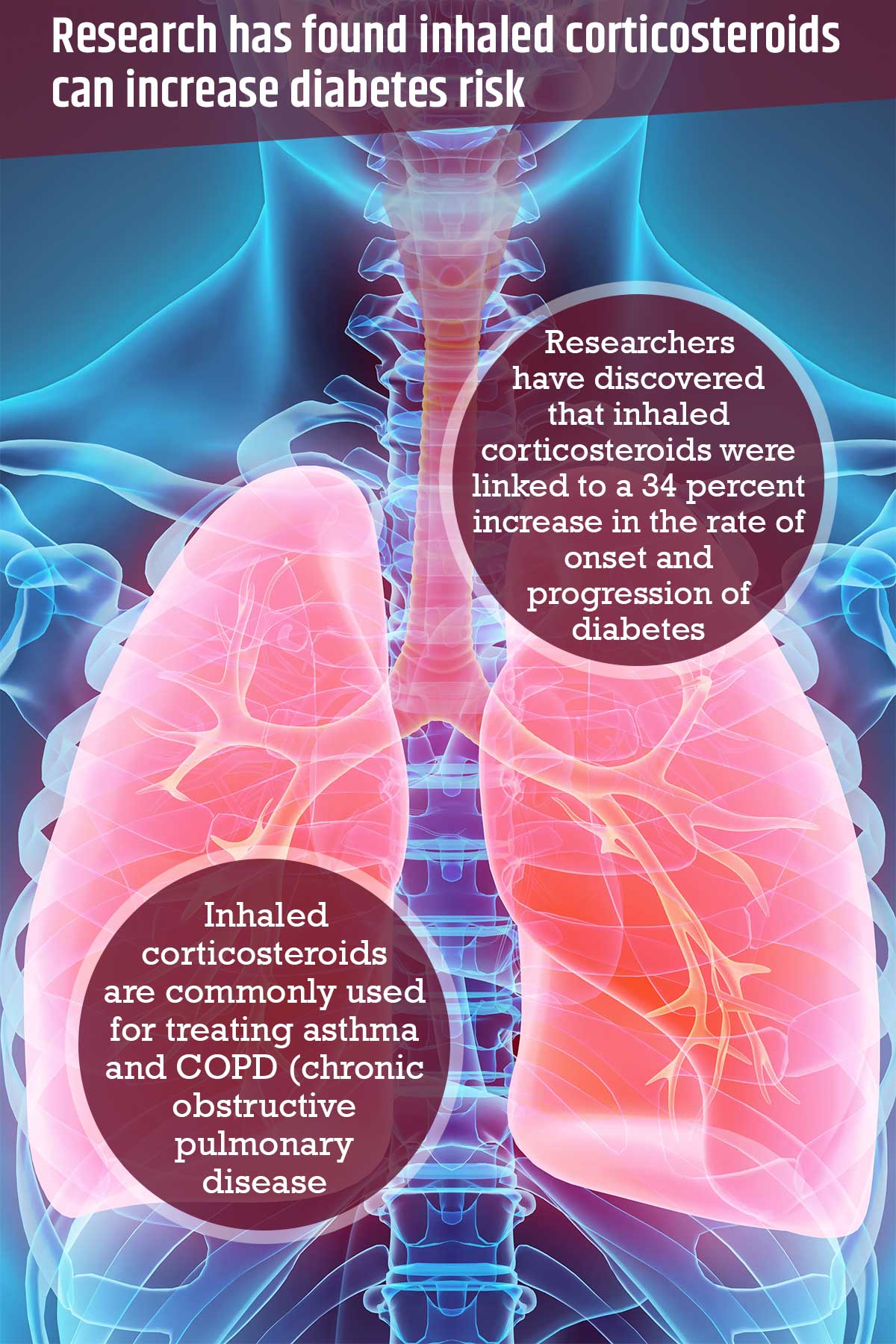Inhaled corticosteroids are commonly made use of for treating asthma and COPD (chronic obstructive pulmonary disease). These medications may however be related to the development and progression of diabetes.
Researchers have discovered that inhaled corticosteroids were linked to a 34 percent increase in the rate of onset and progression of diabetes. On the highest doses inhaled, the risk increased by 64 percent in onset of diabetes, and 54 percent in the progression of diabetes.1✅ JOURNAL REFERENCE
DOI: 10.1016/j.amjmed.2010.06.019
Even though inhaled corticosteroids are advised only for individuals with the most severe COPD, recent practice has resulted in them being used in less severe cases. The fact is, more than 70 percent of all individuals having COPD are making use of inhaled corticosteroids.
Considering that COPD and diabetes have a tendency to increase with age, it’s especially important to determine any possible interaction between the use of inhaled corticosteroids and glycemic control deterioration.
Researchers made use of data from more than 380,000 individuals treated for respiratory diseases. 30,167 individuals developed diabetes during 5 ½ years of follow-up and an additional 2099 who progressed from oral hypoglycemic to insulin treatment.
High doses of inhaled corticosteroids typically made use of in individuals with COPD are linked to an increase in the risk of needing treatment diabetes treatment and of the need to intensify therapy to include insulin.
For that reason, individuals establishing treatment using high doses of inhaled corticosteroids ought to be assessed for the possibility of hyperglycemia and treatment using high doses of inhaled corticosteroids restricted to circumstances where the benefit is apparent.
This large cohort made possible the accurate evaluation of relative risk. There have already been other large randomized studies which haven’t shown a significant connection between inhaled corticosteroids and diabetes onset.
For this study, the researchers discovered an incidence of diabetes onset of 14.2 per 1000 patients annually. At that rate, earlier studies might not have had adequate data to identify the excess risk.



